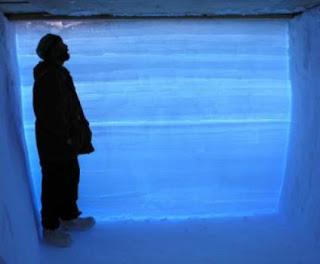
For more than a century scientists have known that Earth’s ice ages are caused by the wobbling of the planet’s orbit, which changes its orientation to the sun and affects the amount of sunlight reaching higher latitudes, particularly the polar regions.
The Northern Hemisphere’s last ice age ended about 20,000 years ago, and most evidence has indicated that the ice age in the Southern Hemisphere ended about 2,000 years later, suggesting that the south was responding to warming in the north.
But new research published online Aug. 14 in Nature shows that Antarctic warming began at least two, and perhaps four, millennia earlier than previously thought.
Most previous evidence for Antarctic climate change has come from ice cores drilled in East Antarctica, the highest and coldest part of the continent. However, a U.S.-led research team studying a new ice core from West Antarctica found that warming there was well under way 20,000 years ago.
“Sometimes we think of Antarctica as this passive continent waiting for other things to act on it. But here it is showing changes before it ‘knows’ what the north is doing,” said T.J. Fudge, a University of Washington doctoral student in Earth and space sciences and lead corresponding author of the Nature paper.
Co-authors are 41 other members of the West Antarctic Ice Sheet Divide project, which is primarily funded by the National Science Foundation.
The findings come from a detailed examination of an ice core taken from the West Antarctic Ice Sheet Divide, an area where there is little horizontal flow of the ice so the data are known to be from a location that remained consistent over long periods.
The ice core is more than 2 miles deep and covers 68,000 years, though so far data have been analyzed only from layers going back 30,000 years. Near the surface, 1 meter of ice covers one year, but at greater depths the annual layers are compressed to centimeters.
Fudge identified the annual layers by running two electrodes along the ice core to measure higher electrical conductivity associated with each summer season. Evidence of greater warming turned up in layers associated with 18,000 to 22,000 years ago, the beginning of the last deglaciation.
“This deglaciation is the last big climate change that that we’re able to go back and investigate,” he said. “It teaches us about how our climate system works.”
West Antarctica is separated from East Antarctica by a major mountain range. East Antarctica has a substantially higher elevation and tends to be much colder, though there is recent evidence that it too is warming.
Rapid warming in West Antarctica in recent decades has been documented in previous research by Eric Steig, a UW professor of Earth and space sciences who serves on Fudge’s doctoral committee and whose laboratory produced the oxygen isotope data used in the Nature paper. The new data confirm that West Antarctica’s climate is more strongly influenced by regional conditions in the Southern Ocean than East Antarctica is.
“It’s not surprising that West Antarctica is showing something different from East Antarctica on long time scales, but we didn’t have evidence for that before,” Fudge said.
He noted that the warming in West Antarctica 20,000 years ago is not explained by a change in the sun’s intensity. Instead, how the sun’s energy was distributed over the region was a much bigger factor. It not only warmed the ice sheet but also warmed the Southern Ocean that surrounds Antarctica, particularly during summer months when more sea ice melting could take place.
Changes in Earth’s orbit today are not an important factor in the rapid warming that has been observed recently, he added.
“Earth’s orbit changes on the scale of thousands of years, but carbon dioxide today is changing on the scale of decades so climate change is happening much faster today,” Fudge said.
Note : The above story is based on materials provided by University of Washington. The original article was written by Vince Stricherz.










